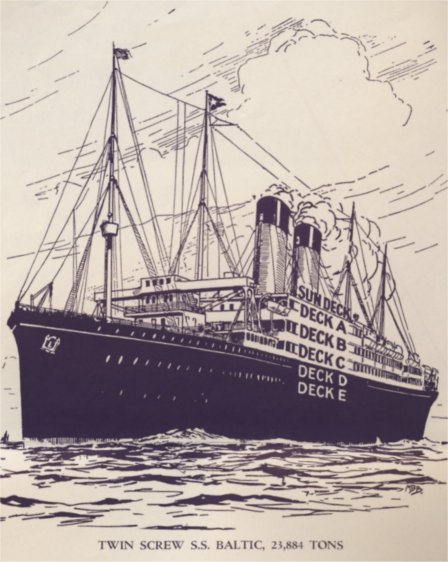A Captain’s Responsibilities: In Charge of a Floating Town
A ship’s captain such as Captain Edward John (‘E.J.’) Smith was responsible for what was, ultimately, a floating town. Plenty of things could happen on a single voyage. One of many unusual incidents occurred about two years before the Titanic disaster. Early in 1910, the White Star liner Adriatic was leaving her New York pier when one of the ship’s stewards heard a revolver shot. One of the second class staterooms was found to be locked from the inside. The ship’s crew forced it open to find a passenger ‘lying on the deck with a bullet wound in the right temple’. Captain Smith wrote in the log:
The revolver was found lying close to the man’s right hand. The ship’s surgeon was called and pronounced life extinct.
Edward Ettridge, who had adopted the stage name ‘Ed Beppo’ for his English music hall performances, had shot himself in Alfred Burgess’ stateroom. He was, briefly and understandably, mistaken for Burgess. One of the ship’s officers had to call for a tug to take the body off the ship. Smith signed the entry in the ship’s log that Ettridge had died of a ‘bullet wound in right temple’, countersigned by Purser McElroy and Chief Surgeon William O’Loughlin. (The story is covered in ‘The “Big Four” of the White Star Fleet: Celtic, Cedric, Baltic & Adriatic’.)
On the same round voyage, which took Adriatic from Southampton to New York and back again, there were a number of crew who either deserted, ‘failed to join’ or ‘left by consent’ at Southampton. After the westbound crossing, Sixth Engineer Arthur Ward had to remain in New York due to ‘suspected appendicitis’. Then there was the case of a trimmer who had to be ‘fined five shillings for disobedience to lawful commands’. He admitted ‘refusing to obey orders, on the plea that the duty took him to the engine room, and that he signed articles to work in the stokehold only’. Another trimmer was reported ‘off duty owing to an injury to his right great toe, caused by a piece of coal falling on the foot’. And they had to take on additional victualling staff to make up for an unexpected number of extra passengers.
Two years later, Captain Smith, Purser McElroy and Chief Surgeon William O’Loughlin all perished in the Titanic disaster.

Above: Captain Edward John Smith (1850-1912). (L’Illustration, April 1912/Author’s collection)





 Above: Thomas Henry Ismay (1837-99). (The Marine Engineer, 1899/Author’s collection)
Above: Thomas Henry Ismay (1837-99). (The Marine Engineer, 1899/Author’s collection)